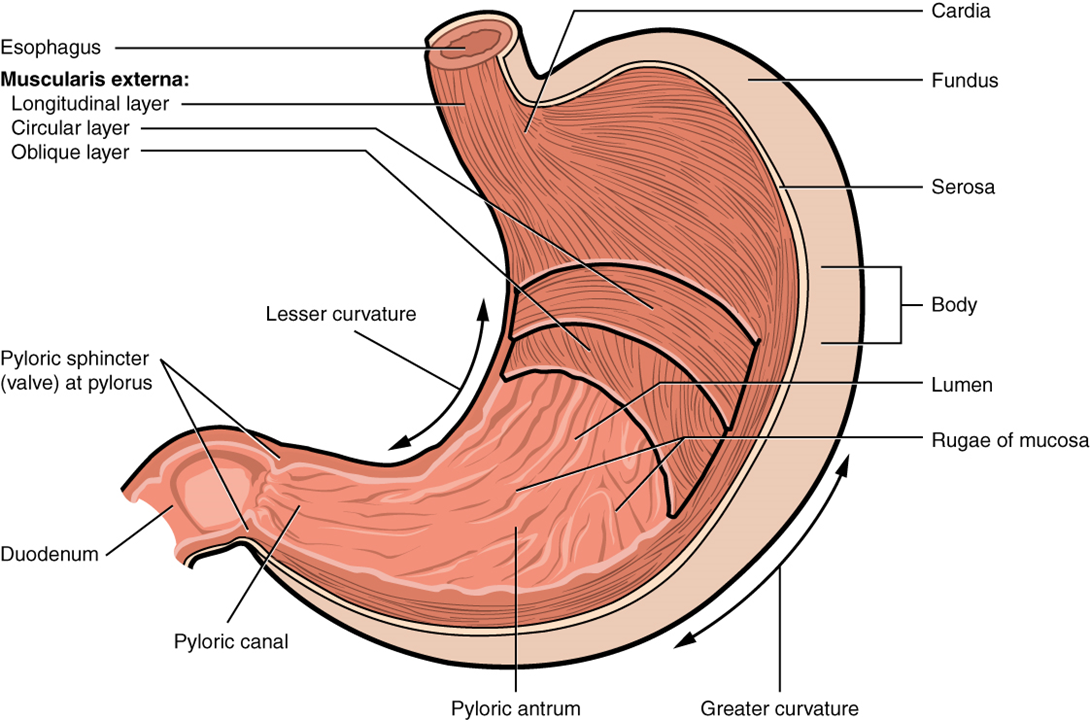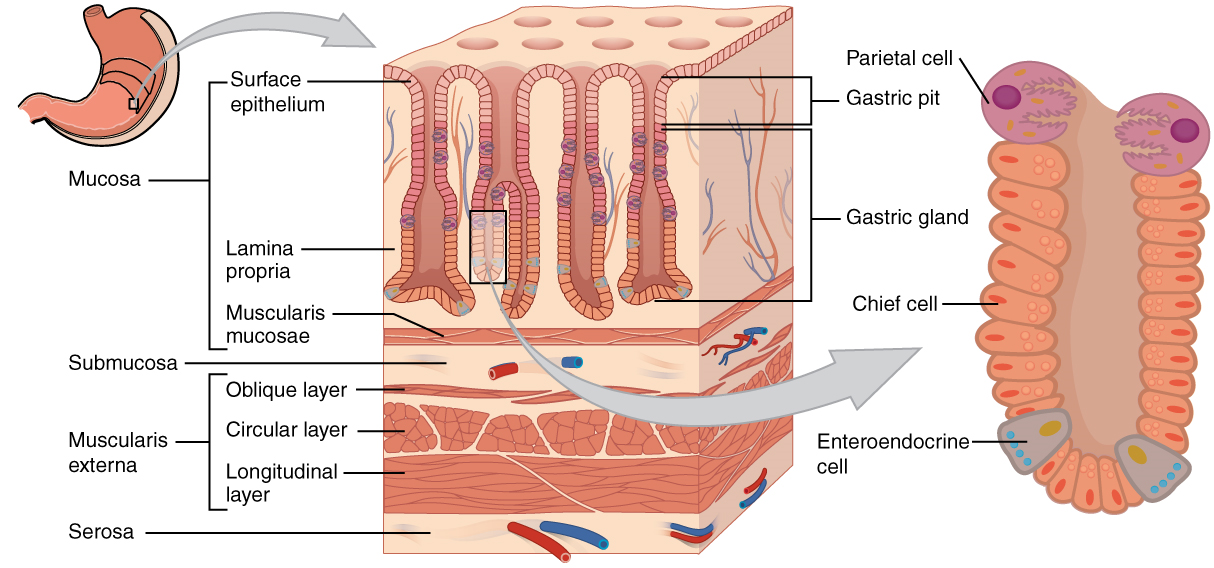20.3: Estómago
- Page ID
- 54329
Hay cuatro regiones principales en el estómago: el cardias, el fondo de ojo, el cuerpo y el píloro (Figura\(\PageIndex{1}\)). El cardias (o región cardíaca) es el punto donde el esófago se conecta con el estómago y a través del cual los alimentos pasan al estómago. Situado inferior al diafragma, arriba y a la izquierda del cardias, se encuentra el fondo de ojo en forma de cúpula.
Debajo del fondo se encuentra el cuerpo, la parte principal del estómago. El píloro en forma de embudo conecta el estómago con el duodeno. El extremo más ancho del embudo, el antro pilórico, se conecta al cuerpo del estómago. El extremo más estrecho se llama canal pilórico, que conecta con el duodeno. El esfínter pilórico del músculo liso se localiza en este último punto de conexión y controla el vaciado del estómago. En ausencia de alimento, el estómago se desinfla hacia adentro, y su mucosa y submucosa caen en un gran pliegue llamado ruga.

Figura\(\PageIndex{1}\): Estómago El estómago tiene cuatro regiones principales: cardias, fondo de ojo, cuerpo y píloro. La adición de una capa interna oblicua de músculo liso le da a los músculos la capacidad de batir y mezclar vigorosamente los alimentos. (CC-BY-4.0, OpenStax, Anatomía Humana)
Histología
La pared del estómago está hecha de las mismas cuatro capas que la mayor parte del resto del canal alimentario, pero con adaptaciones a la mucosa y muscularis para las funciones únicas de este órgano. Además de las típicas capas de músculo liso circular y longitudinal, el músculo tiene una capa interna oblicua de músculo liso (Figura 20.7). Como resultado, además de mover los alimentos a través del canal, el estómago puede batir vigorosamente los alimentos, descomponiéndola mecánicamente en partículas más pequeñas.

Figura\(\PageIndex{2}\): Histología del Estómago La pared del estómago está adaptada para las funciones del estómago. En el epitelio, las fosas gástricas conducen a glándulas gástricas que secretan jugo gástrico. Las glándulas gástricas (una glándula se muestra agrandada a la derecha) contienen diferentes tipos de células que secretan una variedad de enzimas, incluyendo el ácido clorhidrato, que activa la enzima de digestión de proteínas pepsina. (CC-BY-4.0, OpenStax, Anatomía Humana)


